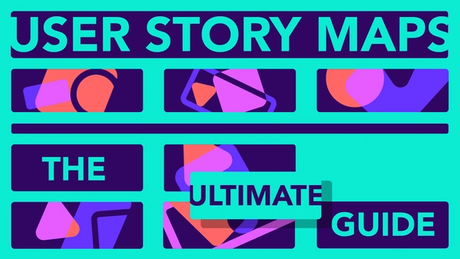Agile best practice
8 min read
DEEP: The 4 Characteristics of a Good Product Backlog
Sun Mar 14 2021
A product backlog represents all of the goals and desired outcomes within the development of a product. They are the specific tasks a team hopes to complete when they set out to design or improve upon a product.
What makes a product backlog so effective is its agile nature. Backlogs are in constant evolution, changing and adapting based on the current needs of stakeholders and customers. To keep a backlog up-to-date and in its most effective form, it needs to be continuously refined and adapted. This process takes time, but there are simple, powerful strategies for maintaining a quality backlog.
A good product backlog has four characteristics. It is:
- Detailed appropriately
- Estimated
- Emergent
- Prioritized
We’ll cover all of these attributes in detail, including how you can ensure your product backlog is in good health. But first, let’s get on the same page about product backlogs and the refinement process.
Transform your flat product backlog with
Easy Agile TeamRhythm
What is a product backlog?
A product backlog is a prioritized and ordered list that represents the work to be completed by a development team. Backlog items are derived from the product roadmap and are organized based on the tasks that are most vital — the ones that will make the biggest impact at any given time.
Backlog items represent what it will take to develop a new product or improve an existing one with new features. It’s all of the work a team will tackle in the future, but it’s also a flexible, living organism that evolves as a development team learns more about the product and its stakeholders.
The product owner is in charge of ordering and prioritizing backlog items, placing high-priority items at the top. They are also responsible for backlog refinement, which ensures all backlog items are organized, have appropriate details, and are ready for any upcoming sprint planning.
Product backlogs vs. sprint backlogs
Sprint backlogs are quite similar to product backlogs, but they serve a different, more specific purpose. At the beginning of a Scrum, the product owner arranges the product backlog items that are to be completed by the Scrum team in that sprint.
The Scrum product backlog represents a small subset of the overall product backlog. The product backlog is the entire bottle of wine, while the sprint backlog is the glass of wine you’re going to tackle next. In this analogy, the Scrum master is the sommelier, providing guidance, context, and feedback throughout the sprint.
At the end of the sprint, a sprint review is conducted with the stakeholders to better understand what to tackle next. Backlog items that weren’t completed may be pushed back into the larger product backlog to get to at a later date or during the next sprint. Another sprint planning meeting will prepare the team to tackle the next batch of backlog items.
Why does a backlog need refinement?
Backlog refinement isn’t a luxury task reserved for when you get a chance to tidy up. Refinement is a key part of product backlog management that ensures a backlog always has the most recent, up-to-date information.
Refining the backlog prepares it for the development team, saving time in the long-run. The process helps to prioritize items and ensures there’s nothing in your backlog that you no longer need.
As you’re well aware, the agile methodology centers around flexibility and the ability to evolve a plan as new information or roadblocks appear. What you thought was important at the beginning of product development may not be necessary anymore, or your stakeholders may have turned you in a completely different direction.
Product backlog refinement includes:
- Adding detail to high-priority backlog items for greater comprehension.
- Improving and reviewing estimates.
- Removing items that are no longer relevant to the product.
- Adding items based on new stakeholder feedback.
- Making adjustments based on the most recent bug fixes.
- Prioritizing items that bring customer value.
- Ordering backlog items to deliver the most impact over the next sprint.
Backlog refinement takes time, but it’s well worth the effort to have a healthy, up-to-date backlog that’s always ready for the development team.
DEEP: The key attributes of a good product backlog
Roman Pichler, the author of Agile Product Management with Scrum: Creating Products That Customers Love, developed DEEP to describe the key attributes of a good product backlog. The acronym DEEP helps product owners and development teams understand how to make smart decisions while maintaining a successful backlog.
The concept is applied throughout the product backlog refinement process, which is a critical part of backlog management. Backlog refinement, previously called backlog grooming, is an ongoing process that ensures a backlog is in tip-top shape. We like to think of it like trimming the branches of a plant.
To help a plant grow, you need to prune and trim it. The refinement process adds details where needed and prioritizes items based on the current information a product owner has from team members and stakeholders.
DEEP stands for Detailed appropriately, Estimated, Emergent, and Prioritized.
Following these guidelines and best practices will lead to a quality backlog, which will lead to smooth product development and a successful end result. Let’s dig into each attribute. 🔎
Detailed appropriately
Details matter, especially as a user story rises in priority. As a backlog item gets closer to being completed or moved into a sprint backlog, it requires more detail. Upcoming backlog items should be detailed appropriately, so they can be better understood by the development team. The closer an item is to being completed, the more detail it should have.
On the other hand, items that are lower on the priority list don’t require nearly as much detail. It’s a poor use of time to add details to lower priority items since you never know how the backlog is going to evolve. You could waste a lot of time detailing low-priority items when they might be removed or revised later on in the process.
Estimated
Thorough estimation should be focused on high-priority items that will be tackled soon. As you refine your backlog and add more details to top-priority items, you can improve your estimation. A good option is using story points to zoom in on the details. They can help you accurately and practically reflect the reality of an item from the customer’s perspective.
📘 Read our guide to incorporating user story points to start using this technique.
Since not much is known about them, it’s difficult to properly estimate items that are lower in priority. When you are further down the priority list, your estimation will be more of a guess since you don’t have all of the information yet. In these cases, use a simple agile estimation technique, such as t-shirt sizing (labeling work items as XS, S, M, L, XL) to make a guesstimate. Based on the information you have at that moment in time, make an approximate estimate on the exertion required for that backlog item.
Emergent
The more you learn about the product and its customers, the more you can improve your product backlog. The backlog is a living document that represents your plan at any one given time. It’s not set in stone, and it should see revisions and improvements as you go.
With the information gleaned from retrospectives and stakeholder feedback, you can update the backlog to reflect what you’ve learned along the way. Allow your backlog to evolve, adding, removing, and refining items as needed.
Prioritized
A product backlog needs prioritization. Items at the top are a higher priority, and items toward the bottom are a lower priority. When deciding which items should be prioritized, consider the value each item will provide.
Your team can maximize its efforts by prioritizing the backlog items that will provide the most value to customers at any given time. Since this will change depending on the current needs of your customers, you need to continually adjust and refine your priority order.
Achieve a DEEP product backlog with Easy Agile
Easy Agile is dedicated to helping agile teams work more effectively. We have a suite of Jira apps designed for teams that want to develop products that put the customer at the forefront of decision making.
Easy Agile TeamRhythm transform your flat product backlog, prioritizing based on value to the customer and bringing the customer journey to life. They help teams organize and prioritize user stories while visualizing the customer journey. Keeping your customers embedded in your process will help you make refinement decisions that are in the best interest of the customer, no matter what phase of development you’re in.
Learn more about our agile apps and follow our blog for the latest content for Jira teams.


![The Ultimate Agile Sprint Planning Guide [2022]](https://cdn.sanity.io/images/w4zc2lav/production/44867b939d2725fb9384dab80a2ec6edadc2a893-1920x1080.png?rect=1,0,1918,1080&w=460&h=259&auto=format)
